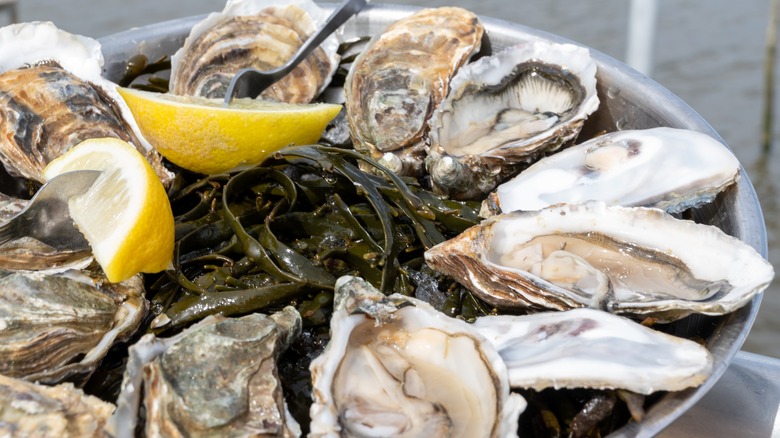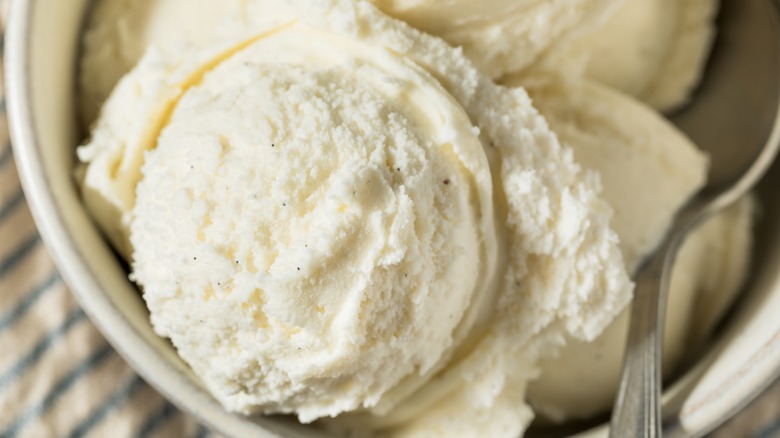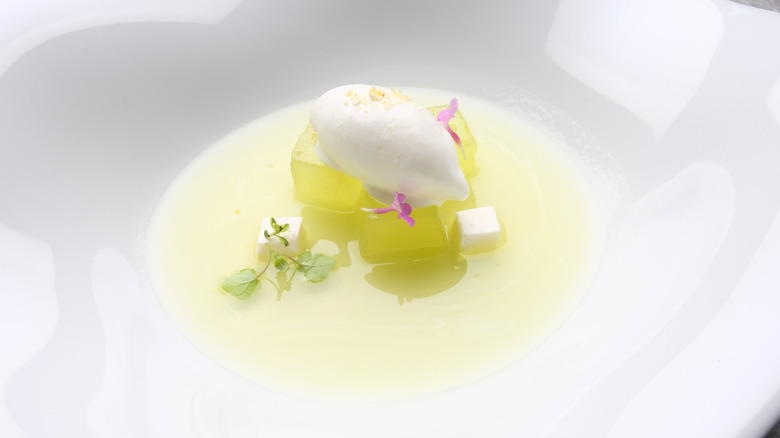How Oyster Ice Cream Came To Be A Real Flavor
Ice cream has fans all over the globe. Because different parts of the world may prefer flavors particular to a culture, one might encounter options like mochi in Japan, halva in Israel, or savory foie gras in France. But in the U.S., most shops stick to a list of long-beloved basics like vanilla and chocolate, and classics like mint chocolate chip, rum raisin, or maple walnut.
Some rumors have circulated that there is another ice cream flavor with deeply American roots, though — one that was supposedly once embraced by everyone from pilgrims to presidents to literary legends — and that's oyster ice cream. Yes, the very same oysters you top with mignonette and shoot back at your local seafood spot. These rumors stated that the briny shellfish used to be the basis for a frozen treat not unlike the ones we enjoy on a hot summer day today.
That said, thanks to deeper modern research into the subject, it seems this may have been one of those pervasive food myths — or at least a misunderstanding. And yet, although it may not be among the most popular ice cream flavors in America, contemporary chefs have taken the idea and run with it anyway, converting what may have just been a lot of hot air into a unique frozen delicacy that is now very much a real thing.
How the rumors spread
The most solid evidence that oyster ice cream existed appears to be from a cookbook published in the 19th century. In "The Virginia Housewife," author Mary Randolph featured the method for "Oyster Cream." In case you wondered if there was some misinterpretation or misclassification, the recipe itself was situated on a page below chocolate and strawberry, and across from coffee "creams." Still, Randolph's creation wasn't what we'd probably refer to as ice cream today, as it was instead a sort of savory frozen soup (made with ham and onions, too).
The recipe featured led some readers to believe it was perhaps an ice cream trend of the day, but many historians have since argued against the idea. For one thing, while oysters were indeed an inexpensive snack, ice wasn't readily available for most people until about halfway through the 19th century. There were reports that Mark Twain even mentioned this stuff in "The Adventures of Tom Sawyer," but they were later refuted, too. In fact, there is very little to suggest that oyster ice cream ever really had an audience.
Today's versions of oyster ice cream
The idea of oystery ice cream alone was enough inspiration for some, like celebrity chef and activist José Andrés, who caught wind of the concept and embraced it in full. After hearing the possibility that pilgrims enjoyed oyster ice cream at the original Thanksgiving feast (also likely untrue, according to historians), the Spanish chef set about engineering his own version. It was served at his America Eats Tavern – a concept created with the purpose of "celebrating America's culinary history," located in Washington, D.C. The restaurant has since closed, but the notion of briny ice cream has survived.
Some cooks have attempted to whip up a version very close to Mary Randolph's classic – onions included – while others have attempted a reimagined approach that might be more friendly to the present-day palate. Modernist cooks have even taken up ingredients that would probably baffle the titular Virginia Housewife of the 19th century, like isomalt and tapioca maltodextrin, to create a version that is a little more focused on the flavor of oysters and simply bolstered by a little lemon juice.
Of course, today's food world has made room for all kinds of less common flavors in the ice cream category (this means that if you're ever in the mood for crawfish ice cream, you can simply head to Houston). But whether or not you buy into the fact that our forebears were spooning up oyster ice cream in their day, it is undeniably a real thing now.


